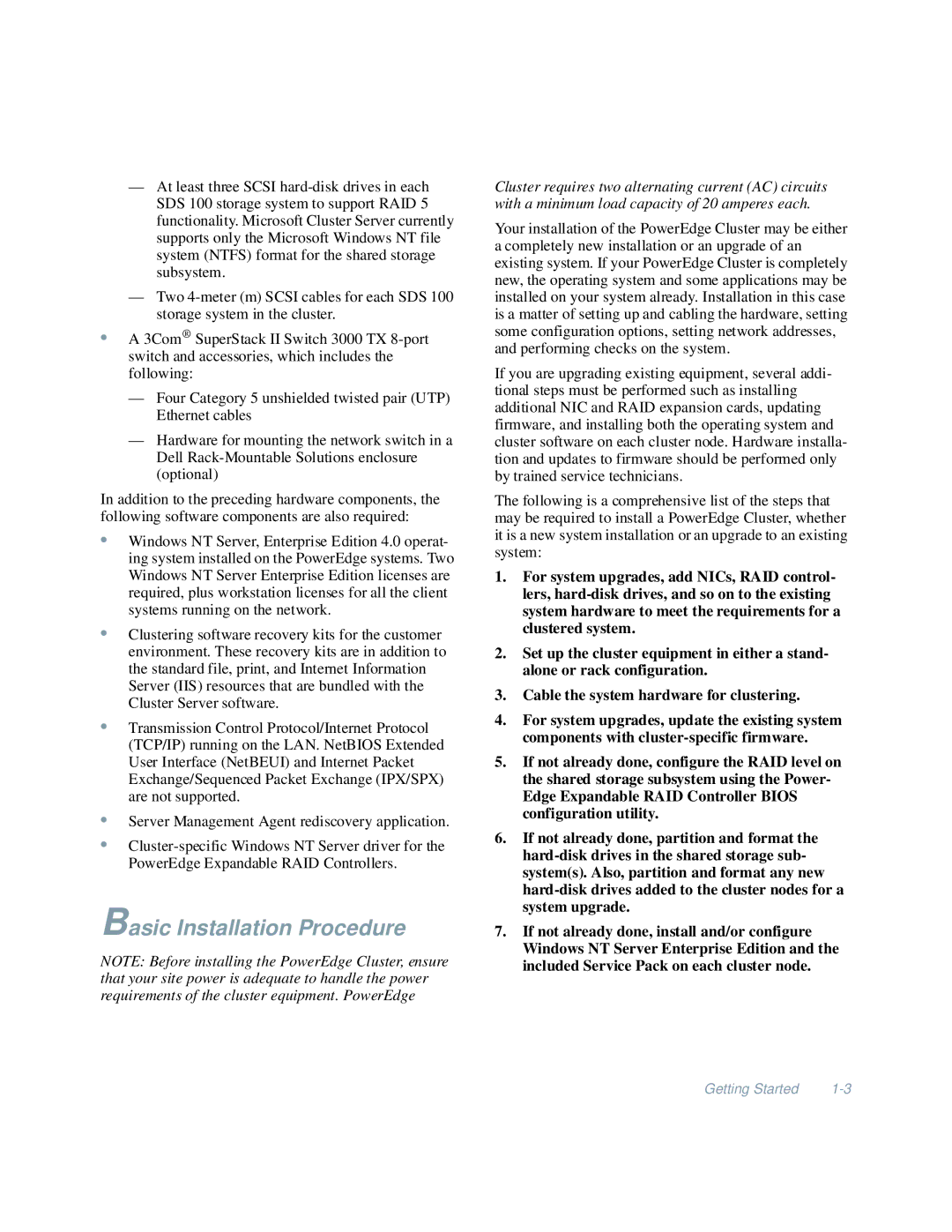—At least three SCSI
—Two
•A 3Com® SuperStack II Switch 3000 TX
—Four Category 5 unshielded twisted pair (UTP) Ethernet cables
—Hardware for mounting the network switch in a Dell
In addition to the preceding hardware components, the following software components are also required:
•Windows NT Server, Enterprise Edition 4.0 operat- ing system installed on the PowerEdge systems. Two Windows NT Server Enterprise Edition licenses are required, plus workstation licenses for all the client systems running on the network.
•Clustering software recovery kits for the customer environment. These recovery kits are in addition to the standard file, print, and Internet Information Server (IIS) resources that are bundled with the Cluster Server software.
•Transmission Control Protocol/Internet Protocol (TCP/IP) running on the LAN. NetBIOS Extended User Interface (NetBEUI) and Internet Packet Exchange/Sequenced Packet Exchange (IPX/SPX) are not supported.
•Server Management Agent rediscovery application.
•
Basic Installation Procedure
NOTE: Before installing the PowerEdge Cluster, ensure that your site power is adequate to handle the power requirements of the cluster equipment. PowerEdge
Cluster requires two alternating current (AC) circuits with a minimum load capacity of 20 amperes each.
Your installation of the PowerEdge Cluster may be either a completely new installation or an upgrade of an existing system. If your PowerEdge Cluster is completely new, the operating system and some applications may be installed on your system already. Installation in this case is a matter of setting up and cabling the hardware, setting some configuration options, setting network addresses, and performing checks on the system.
If you are upgrading existing equipment, several addi- tional steps must be performed such as installing additional NIC and RAID expansion cards, updating firmware, and installing both the operating system and cluster software on each cluster node. Hardware installa- tion and updates to firmware should be performed only by trained service technicians.
The following is a comprehensive list of the steps that may be required to install a PowerEdge Cluster, whether it is a new system installation or an upgrade to an existing system:
1.For system upgrades, add NICs, RAID control- lers,
2.Set up the cluster equipment in either a stand- alone or rack configuration.
3.Cable the system hardware for clustering.
4.For system upgrades, update the existing system components with
5.If not already done, configure the RAID level on the shared storage subsystem using the Power- Edge Expandable RAID Controller BIOS configuration utility.
6.If not already done, partition and format the
7.If not already done, install and/or configure Windows NT Server Enterprise Edition and the included Service Pack on each cluster node.
Getting Started |
